Adobe recently released the public beta of Lightroom 3. The application is a digital workspace for photographers. In a sea of similar products, Lightroom has built a strong name for itself with its simple interface, powerful tools, and helpful image libraries.
The Epoch Times spoke with Adobe’s senior product manager for Lightroom, Tom Hogarty, on what users can expect from the newest release of Lightroom, which should hit store shelves in 2010.
The Epoch Times: What was it that first sparked the idea of creating Lightroom?
Tom Hogarty: It was actually just a seed project at Adobe for many years. One of the first few engineers to work on the Photoshop product was basically taking some time to step back and look at the market and look at technology solutions particularly for digital photographers.
Photoshop was basically created almost 20 years ago, and wasn’t necessarily designed explicitly for digital photographers. It was designed when most photography was analog, so any image you wanted to work with in Photoshop was scanned. Usually only one out of 100 or one out of 1,000 images would actually get scanned onto a computer, so Photoshop became a great place to work on a single image and perfect it, because the analog process—the light table and the wax pencils—kind of took care of the selection and refining process of getting down to that one image.
Digital photography came and changed all of that, because then the entire workflow was on your computer, and while Photoshop can be scripted and you can create actions to address—applying changes to multiple images, or trying to make selections through a file browser—it’s still tuned to the analog workflow of perfecting one image out of many. So this engineer basically did another seed project, to find out what Photoshop would look like for photographers today if we could start over.
So he built up a team and met with many different photographers, did a lot of brainstorming, and came up with many different ideas. One of the great things is that it’s based on this concept of non-destructive or metadata-based editing, and that was one of the key foundations—that you kind of have unlimited undo. You can always get back to your starting point and you don’t have to worry about “Well do I merge the pixels that way or this way.” It’s really fearless editing.
Epoch Times: Do you remember what your thoughts were when you first came onto this project; what your impressions were of it?
Mr. Hogarty: It really just changed my perception. I didn’t realize how much I needed it until I saw it, because I had been working in New York helping commercial photographers switch from film to digital, and you had to compel together this workflow of selection, renaming, file management, and file output for the Web, and you’re running all these bad factions. Basically, to have all these things available in a single tool, with integrated edit, just hadn’t occurred to me until I saw it. I was just like, “This is absolutely perfect. I wish I had this 10 years ago.”
The Epoch Times spoke with Adobe’s senior product manager for Lightroom, Tom Hogarty, on what users can expect from the newest release of Lightroom, which should hit store shelves in 2010.
The Epoch Times: What was it that first sparked the idea of creating Lightroom?
Tom Hogarty: It was actually just a seed project at Adobe for many years. One of the first few engineers to work on the Photoshop product was basically taking some time to step back and look at the market and look at technology solutions particularly for digital photographers.
Photoshop was basically created almost 20 years ago, and wasn’t necessarily designed explicitly for digital photographers. It was designed when most photography was analog, so any image you wanted to work with in Photoshop was scanned. Usually only one out of 100 or one out of 1,000 images would actually get scanned onto a computer, so Photoshop became a great place to work on a single image and perfect it, because the analog process—the light table and the wax pencils—kind of took care of the selection and refining process of getting down to that one image.
Digital photography came and changed all of that, because then the entire workflow was on your computer, and while Photoshop can be scripted and you can create actions to address—applying changes to multiple images, or trying to make selections through a file browser—it’s still tuned to the analog workflow of perfecting one image out of many. So this engineer basically did another seed project, to find out what Photoshop would look like for photographers today if we could start over.
So he built up a team and met with many different photographers, did a lot of brainstorming, and came up with many different ideas. One of the great things is that it’s based on this concept of non-destructive or metadata-based editing, and that was one of the key foundations—that you kind of have unlimited undo. You can always get back to your starting point and you don’t have to worry about “Well do I merge the pixels that way or this way.” It’s really fearless editing.
Epoch Times: Do you remember what your thoughts were when you first came onto this project; what your impressions were of it?
Mr. Hogarty: It really just changed my perception. I didn’t realize how much I needed it until I saw it, because I had been working in New York helping commercial photographers switch from film to digital, and you had to compel together this workflow of selection, renaming, file management, and file output for the Web, and you’re running all these bad factions. Basically, to have all these things available in a single tool, with integrated edit, just hadn’t occurred to me until I saw it. I was just like, “This is absolutely perfect. I wish I had this 10 years ago.”
Epoch Times: What were some of the complaints you received in previous versions that have been addressed in Lightroom 3?
Mr. Hogarty: The things photographers seem to talk about the most when it comes to imaging software is image quality—because you never want to sacrifice on the quality of your images—and performance. Performance is a big one, because waiting for that loading level can drive a lot of people nuts. We wanted to address some performance issues in this release, as well as improve the quality of our image processing so that a photographer using our application knows it works quickly, but is using it because they can get the best quality in their images using this application.
Epoch Times: Do you think the vision has changed at all from the original vision of what they wanted it to become? Are there any features that were hoped to be put into the original project that never made it in?
Mr. Hogarty: The vision actually hasn’t changed. The team put a lot of effort into creating a vision of producing a product that was really dedicated to photographers and giving them what they needed. Even though you’re on the computer, you can really create that elegant environment of the darkroom—we all remember the smell of fixer on our hands, I don’t know how elegant that is—you can enjoy photography [on the computer] rather than thinking, “Oh, I have to get on the computer to do some post production.”
Now you can actually spend some time with your images and realize whatever your vision was for those photographs. So that has remained true. Obviously, with all the feedback and the long public betas we’ve had in the past, we tune that direction to make sure we’re meeting customer’s expectations and meeting photographer’s needs.
There is a laundry list of things I'd like to see in the application. Since we started with the first public beta, we gathered enough public feedback in those 13 months to basically fill the product out until version seven. There is enough work on that list to easily take it up to version seven.
Ease of use and a really low learning curve are important for the application—we have to be very disciplined in not adding things too aggressively. We always take time in each cycle to revisit an area of the application that is, well, functional—it does what it’s supposed to do, even if it is easy to use or isn’t visually understandable.
So in Lightroom 2 we went back and took all the components of the library module which were scattered somewhat haphazardly when we released it, and we decided to add a lot more intuitive experience by redesigning how we layout these different areas of the filter search tools, applying keywords and having your sources clearly identified on the left hand side.
You can see in Lightroom 3 beta that in revising the import experience we haven’t had tremendous amounts of new functionality, but it’s important that we revisit how it was laid out, and make sure that in feedback people understand how to use it without having to read a book.
Epoch Times: Which of the new features in Lightroom 3 is your team most excited about?
Mr. Hogarty: The team is comprised of many individuals with distinct opinions. We all have our favorites. I think one thing we see a lot of potential in is the publish collections, and we put an example of a Flickr plugin in the beta, where it’s just drag and drop publishing to your Flickr. I think the potential for that is really huge, considering that we’re building on an API (Application Programming Interface) so that you can connect to any photo sharing site and get that same drag and drop workflow. The application is no longer an island on the desktop that doesn’t really communicate with other entities.
We need to respect the fact that this is just one part of the photographer’s experience and we need to connect other parts. We’ve focused on a workflow API to let Lightroom be a platform in the middle of your imaging world, and not just a dead end destination.
We didn’t actually make substantial changes. We actually simplified the interface quite a bit. What we’re not afraid of doing is taking features out if we don’t think they are working. We took a certain version of post cropping out of the develop module because we just didn’t think it was as good as it could be and we want to keep moving the product forward and not burden it with legacy things that don’t really work as well as they should—that’s the kind of crust that starts accruing over time and you end up with 45 different ways of doing something and you need to read a book to find out which one is the right way.
Epoch Times: I’ve read that you made some improvements to the noise reduction. Is it on par with Photoshop add-ons like Noise Ninja, which is the standard for professionals?
Mr. Hogarty: Personally, I'd say just with the color noise reduction we implemented in the public beta, we’re only halfway there. There are two aspects: the color noise reduction and the luminance noise reduction. We didn’t finish luminance for the public beta, so we just turned it off. But even with just the color noise reduction, I find myself turning to Noise Ninja much less frequently. I basically have it set up as an external editor, and that workflow of having to go out into a secondary application and generate a Tiff, is somewhat inefficient when I think that noise reduction should be done, kind of on the RAW image within Lightroom.
I’m curious, so I’ve been looking at the feedback on various blogs and articles. So far, I think most people are agreeing that this is probably the industry leading noise reduction technology. These are somewhat a subjective area, which is part of the reason we put it out as part of the public beta.
Epoch Times: Can you talk a bit about the process of creating that engine?
Mr. Hogarty: We have some amazing imaging scientists, programmers, and engineers who are very passionate about photography themselves. They shoot a great deal, but they also have an amazing knowledge of science and math and can connect the problems from a theoretical and practical application. We could probably have a solution that takes five minutes to run on an image to reduce noise, but it’s not really in keeping with the workflow. You basically have to balance the complexity of the algorithms we choose, based on the theory with the practical impact on your workflow on the application, and I would say Adobe’s imaging scientists are some of the best in the world at that.
Epoch Times: There’s a lot of new technology out, with the second release of Lightroom, and now the third release. How has this helped you guys bring out what you'd like to in terms of processing speed and what you can do with the hardware?
Mr. Hogarty: It certainly is nice that the hardware has been progressing so rapidly. 64-bit systems are much more common so we can utilize 64-bit native architecture on Windows and Mac. That’s very nice. It’s very beneficial for us to be able to access those multiple cores, so we kind of move amongst how hardware is progressing so we can take advantage of the latest and greatest.
I would argue that some of these image quality improvements wouldn’t really be feasible if the hardware wasn’t really improving, because when you improve the quality and complexity of the algorithms you’re using on your images, you’re actually increasing the amount of processing time that the computer needs to cycle through those algorithms. So we need to be able to rely on newer hardware to do that faster so that it doesn’t slow down the experience.
Epoch Times: We talked a little about this before, but maybe we can go a little deeper into it. One main element that makes Lightroom better for photographers than Photoshop is that the interface is really easy to use. Casual users can figure it out very easily. How have you approached adding new features to Lightroom without losing that simplicity?
Mr. Hogarty: That is one of the biggest challenges. It’s not to say that Lightroom’s interface is better than Photoshop’s. It’s just that we’ve incorporated a lot of usability learnings. Since we sit on the same floor, we can say right from the get-go that we’re going to make our panels more rigid, because in Photoshop we see a lot of people hunting for where they put their last panel. In Photoshop CS4 there’s a bit more rigidity in its panel layout.
We took some learnings because we want to be easy to use, and add new features with a great deal of caution. When we added an improved vignette model, that meant taking out the old one, as multiple choices are just one more layer of complexity. We want people to be able to look at the interface and say, “Okay that makes sense—I understand what that’s going to do in a few seconds, and I'll get instant feedback when I start using that tool.”
I think that’s really important. Some of the issues with the batch processing workflow in Photoshop is that you kind of set all these widgets and then you have to hit go and wait for it, and that’s kind of the action experience. Only when it’s done can you see whether it worked or not. We prefer a live preview or live feedback to whatever you’re doing so there’s no guess work.
Epoch Times: I think one thing a lot of people are going to be looking for now is support for the video additions to a lot of SLR cameras. Is Lightroom 3 addressing that, or are there any plans to address this?
Mr. Hogarty: I’ve talked a lot about that in the past year. I will preface that I made a promise that I won’t talk about features that are going to be included in Lightroom 3.0 that aren’t in Lightroom 3 beta. That being said, there are very few DSLRs being released right now that don’t include support for video capture, so it’s an important topic for our customer base.
I spent the weekend shooting with one of the more recent Nikons that capture video, and I didn’t think I'd like it as much as I did. I wanted to maintain my purest still-photo mentality, but it was really impressive. So I do think it’s very important that we address it. There are two kinds of support, though. Do we treat Lightroom like an asset manager, where it basically helps you organize and store those files—or do we delve into the world of timeline editing, which is a pretty big step for a still imaging application? So I’ve been talking to a lot of folks in the industry in the past year about this very topic.
Epoch Times: Did you include what you regard as the best features in the beta release of Lightroom 3, or are there still a few things coming out that fans can look forward to?
Mr. Hogarty: Everyone’s best feature is different. I think we added some things in the beta [that] we knew needed time to bake—a phrase we use in the development world—and get some feedback on. Other things for practical reasons just didn’t make it because they missed the cut-off, and that’s luminance noise reduction—and I think people will really, really appreciate the combination of luminance and color noise reduction. So I wouldn’t say we determined what went into the public beta based on what were the best. It was more a practical approach of what needs more time for feedback and what could meet the time for cut-off in terms of the timing.
Epoch Times: Could you talk about that luminance feature? For beta users, it’s that weird, inaccessible tool there.
Mr. Hogarty: There are two types of noise reduction. One that addresses the color noise, the splotchiness, and that we have updated in this version. The other is the remaining noise from non-color values. To leave the previous implementation turned on and allow people to use it, I think would cause confusion in feedback on the color noise reduction. One of the things we had feedback on in the past is that our noise reduction, while it does remove noise, actually can have the visual impact of smearing the image a bit. It adds a softness to it.
So we’ve completely removed that artifact from the new color noise reduction. But if we left the luminance noise reduction enabled in the previous technology, it would have also had the same impact as it did in the past and that might have confused feedback on the color noise reduction. So obviously we’re shooting for the same goals—remove noise without loss of detail. With luminance noise reduction, it just wasn’t ready in time.
Epoch Times: Are there any other topics you'd like to bring up? Any parts we missed?
Mr. Hogarty: A lot of questions we get are how will these changes effect the Camera RAW plugin that is part of Photoshop. We try to make it very clear that Lightroom and Camera RAW as a plug-in share the same image processing technology, so we just used Lightroom as the beta platform for this new technology. So Camera RAW will be updated with all these features.
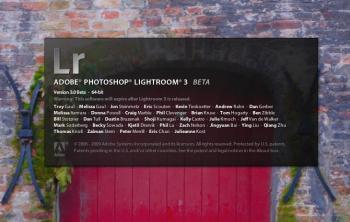

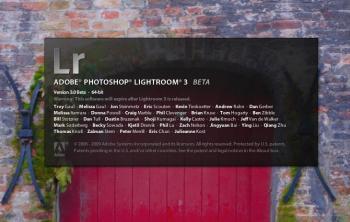
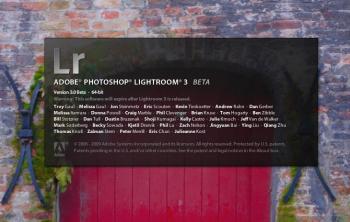
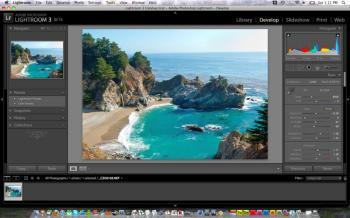
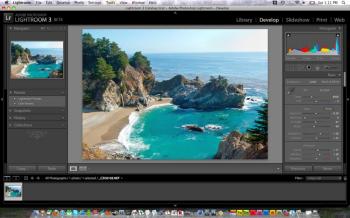
![[LIVE Q&A 04/25 at 10:30AM ET] Why Is Australia Going After Elon Musk?](/_next/image?url=https%3A%2F%2Fimg.theepochtimes.com%2Fassets%2Fuploads%2F2024%2F04%2F24%2Fid5636785-CR-TN_REC_0425-1080x720.jpg&w=1200&q=75)



Friends Read Free